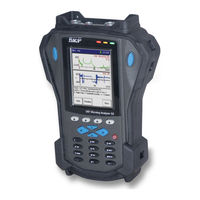SKF Microlog GX-M Manuals
Manuals and User Guides for SKF Microlog GX-M. We have 1 SKF Microlog GX-M manual available for free PDF download: User Manual
SKF Microlog GX-M User Manual (343 pages)
Data Collector/Analyzer Supports the GX Series Microlog System CMXA 75
Brand: SKF
|
Category: Measuring Instruments
|
Size: 10.51 MB
Table of Contents
-
-
-
-
Power Button24
-
-
Battery Life29
-
-
-
-
Autorange45
-
Sensor Units45
-
Filter Entry46
-
Trigger46
-
Module ICP47
-
Date Format47
-
Time Zone47
-
Memory47
-
Bias Check48
-
Nonroute48
-
Sensor Setup52
-
-
-
Overview57
-
-
Microlog80
-
-
Input Range81
-
-
-
-
-
Overview91
-
-
Sensitivity100
-
ICP Supply100
-
View Signal100
-
Y-Axis Units100
-
Detection101
-
Lines101
-
Avg. Type101
-
Num. Averages101
-
Window102
-
Hanning102
-
Hamming102
-
Flattop102
-
-
-
Triax Displays118
-
-
-
-
-
Overview177
-
-
-
Overview185
-
-
Bode Plot Setup192
-
Display197
-
Display Setup197
-
Cursor Movement210
-
Saving RUCD Data210
-
-
-
Overview211
-
Saving FRF Data223
-
-
Overview225
-
-
-
-
-
Overview247
-
-
Enter the Result265
-
-
-
Overview273
-
Hardware Setup277
-
Hand Held Method279
-
-
Overview295
-
Non ROUTE Mode296
-
High Resolution297
-
-
Opposite297
-
Orbit Operation299
-
An Orbit Display303
-
-
-
Overview321
-
-
Index
335
Advertisement
Advertisement
